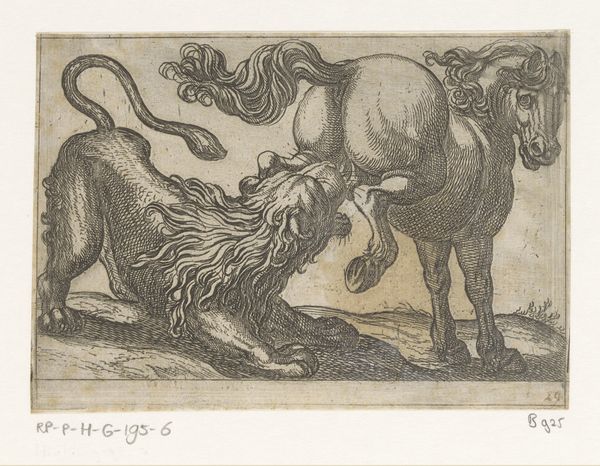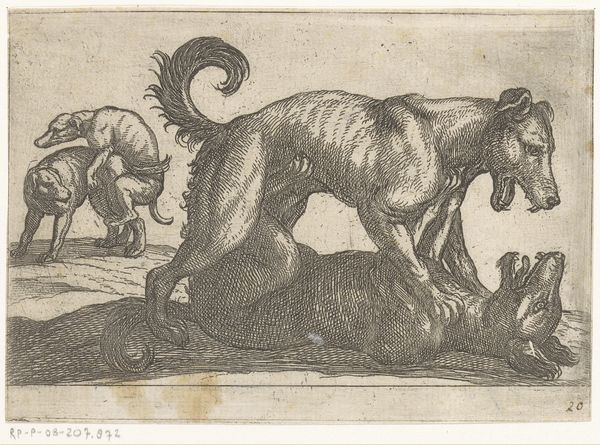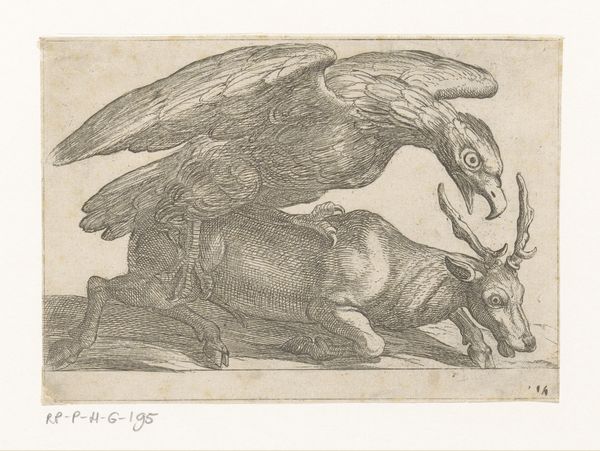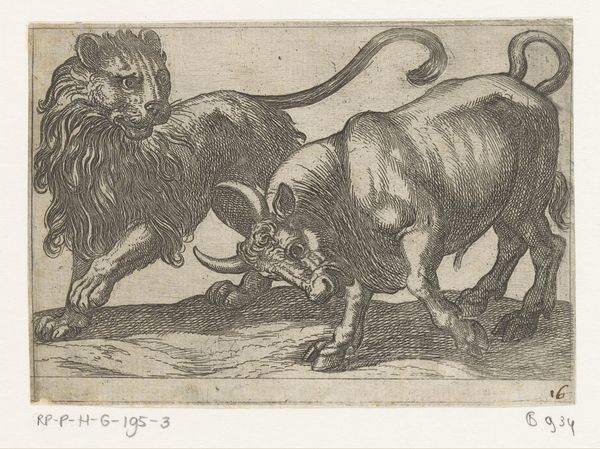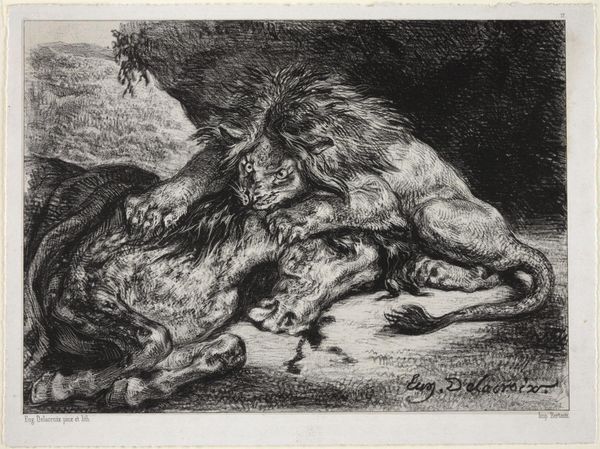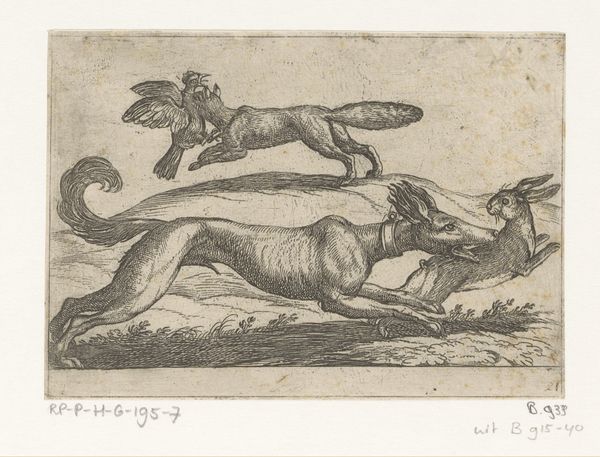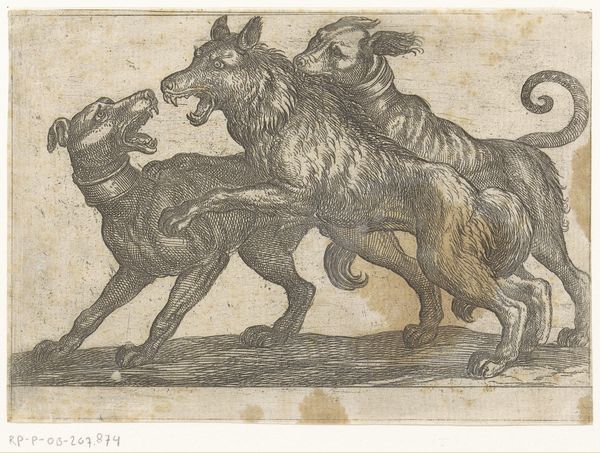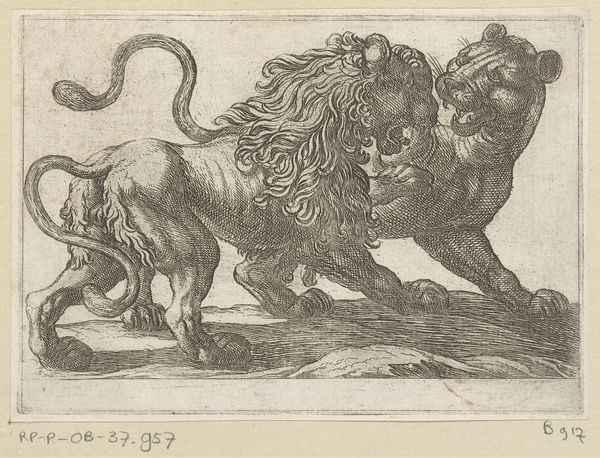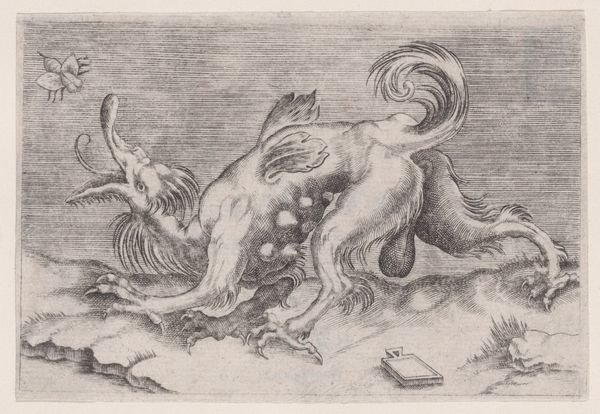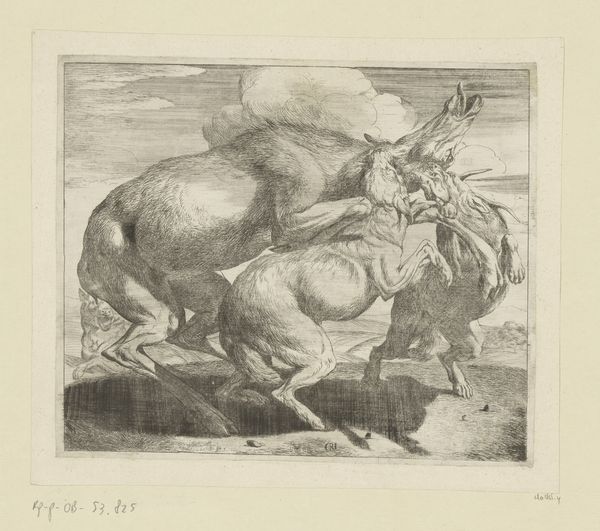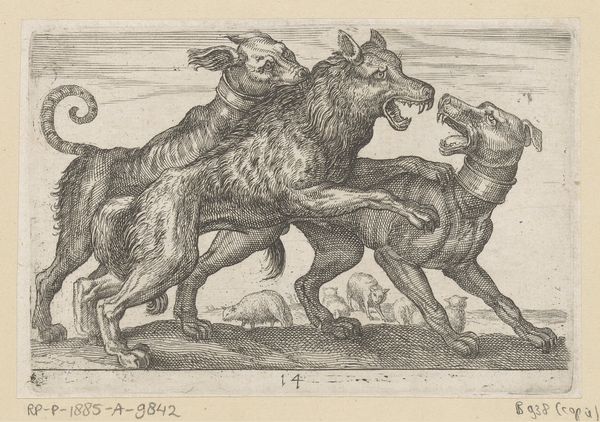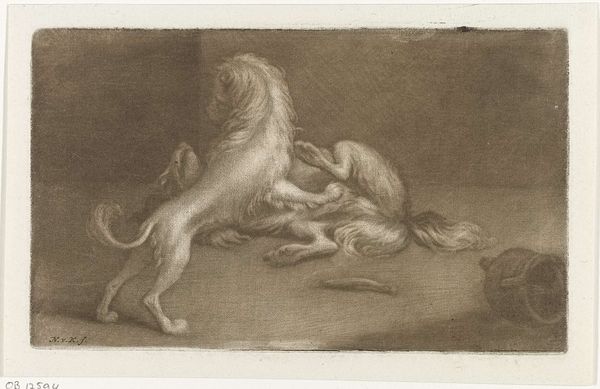
print, etching, engraving
#
light pencil work
#
baroque
#
animal
# print
#
pen sketch
#
etching
#
pencil sketch
#
old engraving style
#
figuration
#
personal sketchbook
#
ink drawing experimentation
#
pen-ink sketch
#
line
#
pen work
#
sketchbook drawing
#
genre-painting
#
history-painting
#
sketchbook art
#
engraving
Dimensions: height 92 mm, width 130 mm
Copyright: Rijks Museum: Open Domain
Editor: Here we have "A Lion Attacking a Bull" by Antonio Tempesta, created around 1600. It's an etching, so lots of very fine lines, depicting exactly what the title says. I'm struck by how brutal it is, the lion really seems to be going for the kill. How do you interpret the message here? Curator: Well, considering the era, these violent animal depictions often served as metaphors for human struggles and power dynamics. Think of the socio-political landscape of the time – constant power struggles between nations and factions, and how these battles trickled down through societies at different levels. Editor: So, it's not *really* about the animals at all? It's about people? Curator: Precisely. The lion, traditionally a symbol of strength and royalty, overpowering the bull, which can represent stability or even peasantry depending on the context. Ask yourself, what was happening in Europe around 1600? The rise of powerful monarchies? Religious conflicts? Tempesta's Rome itself was awash with different ruling families trying to assert dominance through commissioned artwork! Editor: I see... so this image might subtly, or not so subtly, reflect or comment on those power imbalances of the period. A little dangerous if it was not subtle? Curator: Exactly. Printmaking was a readily accessible method of distributing political messages. The art itself becomes part of the socio-political environment. Who was buying these prints, how were they being circulated? The imagery holds so much symbolic potential for its contemporary audience. Editor: I hadn’t considered the art itself could *be* a political statement. So much for thinking it was just a lion and a bull. Curator: The artwork *IS* the lion and bull; it is not possible to understand them if we don't understand that period and its power. What appears at first glance to be a simple depiction can reveal complex cultural commentaries once we unpack the historical context. Editor: That really puts it into perspective. It's like understanding the rules of a game before you can appreciate the plays. Curator: Yes! And now we need to understand how our own institutions impact such readings in the present, but that's a different, but important, story.
Comments
No comments
Be the first to comment and join the conversation on the ultimate creative platform.
